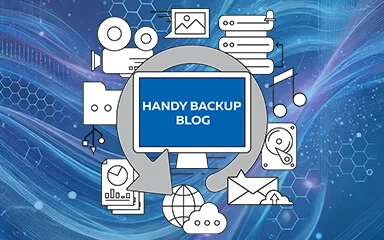Checksum verification is the process of confirming that a file’s data remains intact by comparing its calculated fingerprint—such as MD5, SHA-1, or SHA-256—against a known value. This “fingerprint” acts like a signature for the file, ensuring that no corruption, transfer errors, or unintended changes have occurred during backup or storage. By verifying checksums, users can confidently guarantee data integrity and detect any issues before they affect critical files.
How Checksum Verification Works
Checksum verification ensures that your files remain intact during creation, transfer, and backup. It works by generating a unique digital fingerprint for each file using algorithms such as MD5, SHA-1, or SHA-256. Here’s how it works in practice:
- Generate: When a file is created or modified, a checksum value is calculated based on its content.
- Compare: During backup or transfer, the checksum of the copied file is recalculated and compared to the original.
- Verify integrity: If the values match, the file is intact; if they differ, it indicates corruption, incomplete transfer, or unauthorized changes.
- Flexible application: Checksums can be applied to individual files, entire folders, or even large datasets.
- Reliable backups: This process ensures that backups are accurate, complete, and safe for long-term storage.
Why It Matters for Backups
Checksums provide a practical safeguard against issues that may not be immediately visible. Network interruptions, disk errors, or software glitches can silently corrupt files during transfer or storage. By verifying checksums, backup systems can detect these problems early, preventing corrupted copies from being stored long-term. This is especially important for large datasets, critical business files, or multi-location backups, where even a single corrupted file can disrupt restoration or cause data loss.
Checksum in Cloud Backups
When backing up data to cloud storage, different providers implement checksum verification in slightly different ways. These checksums ensure that files remain intact during upload, transfer, and storage, giving users confidence that their backups are reliable.

Amazon S3
Amazon S3 has traditionally used MD5 checksums through ETags, but now it also supports newer algorithms such as CRC32, CRC32C, SHA-1, and SHA-256.
Use the AWS CLI command aws s3api head-object --bucket BUCKET_NAME --key or check via the S3 console under the file’s properties.
FILE_KEY --query ChecksumSHA256

Backblaze B2
Backblaze B2 uses SHA-1 checksums for all uploaded files. The system automatically verifies each file upon upload, providing immediate confirmation that the data is intact and ready for safe storage.
Use the B2 CLI command b2 get-file-info FILE_ID or check via the Backblaze web interface under file details.
Other S3-Compatible Clouds
Many S3-compatible services, including Wasabi and MinIO, typically support SHA-256 or other provider-specific checksum algorithms. These algorithms help ensure data integrity across different cloud platforms, maintaining consistent protection for backups.
Check the provider’s console or use their API/CLI tools; most S3-compatible services allow retrieving SHA-256 or equivalent checksums for individual files.
Learn which Amazon S3 cloud services exist, how they interact with each other, and the overall structure of the Amazon S3 cloud.
Checksum in Handy Backup
With Handy Backup, checksum verification is effortless and user-friendly, eliminating the need to manually run CLI commands or interact with complex APIs. This Amazon S3 backup software handles all calculations and comparisons automatically during backup, so users can ensure their files are intact without technical overhead. This makes verifying data integrity much simpler, even when working with multiple cloud providers or large datasets.
Here are some additional benefits of using Handy Backup for Amazon S3 backups:
- Encryption: AES-256 encryption ensures your data is secure both during transfer and at rest.
- Automated backups: Schedule recurring backups so your files are always protected without manual intervention.
- Partial backups: Transfer only changed or selected files to save time and storage space.
- Region selection: Choose the nearest or most suitable S3 storage region for faster, more reliable backups.
- Email notifications: Receive detailed reports about backup status and logs directly to your inbox.
See for yourself how to make Amazon S3 backup with Handy Backup easily and effortlessly.
Version 8.6.7 , built on November 26, 2025. 153 MB
30-day full-featured trial period
Try the 30-day trial and experience Handy Backup for Amazon S3. Enjoy features like checksum verification for reliable backups, support for FTP/SFTP/FTPS transfers, and region selection to optimize speed and stability.
FAQ
- How can I retrieve a file’s checksum in Amazon S3?
Amazon S3 calculates checksums such as MD5, SHA-1, SHA-256, or CRC32 to verify file integrity. You can retrieve these via the AWS CLI using
commands like aws s3api head-object --bucket BUCKET_NAME --key FILE_KEY --query or check the file’s properties in the S3 console. With Handy Backup, this process is fully automated during backups, so your files are verified without running any CLI commands manually. For long-term archiving strategies, consider exploring Amazon Glacier backup options as well.
ChecksumSHA256
- Which checksum algorithms are supported by Backblaze B2?
Backblaze B2 uses SHA-1 checksums to verify that files are correctly uploaded and stored. With Handy Backup, this process becomes seamless: our backblaze backup software automatically integrates algorithm verification, ensuring that all files transferred to B2 are intact, without requiring users to manually check or compare values.
- How do S3-compatible cloud providers handle checksum verification?
Many S3-compatible services, including Wasabi and MinIO, use SHA-256 or other provider-specific checksums to ensure data integrity. Normally, users would need to manually retrieve these via the provider’s console or API. Handy Backup automatically calculates and verifies checksums according to each provider’s rules, making multi-cloud backup workflows simple and reliable.
- Why is checksum verification important for cloud backups?
Checksums act as digital fingerprints for files, allowing you to detect corruption, incomplete transfers, or unauthorized changes before data is stored long-term. Handy Backup performs these verifications automatically during every backup task, ensuring that your cloud copies are accurate, complete, and secure without manual effort.
- How can I detect data corruption in large file transfers?
By comparing checksums of the source and transferred files, you can identify discrepancies caused by network errors, storage issues, or software glitches. Handy Backup automates this process, alerts you if verification fails, and can retry transfers automatically, ensuring that even large datasets remain intact and reliable across multiple cloud providers.

